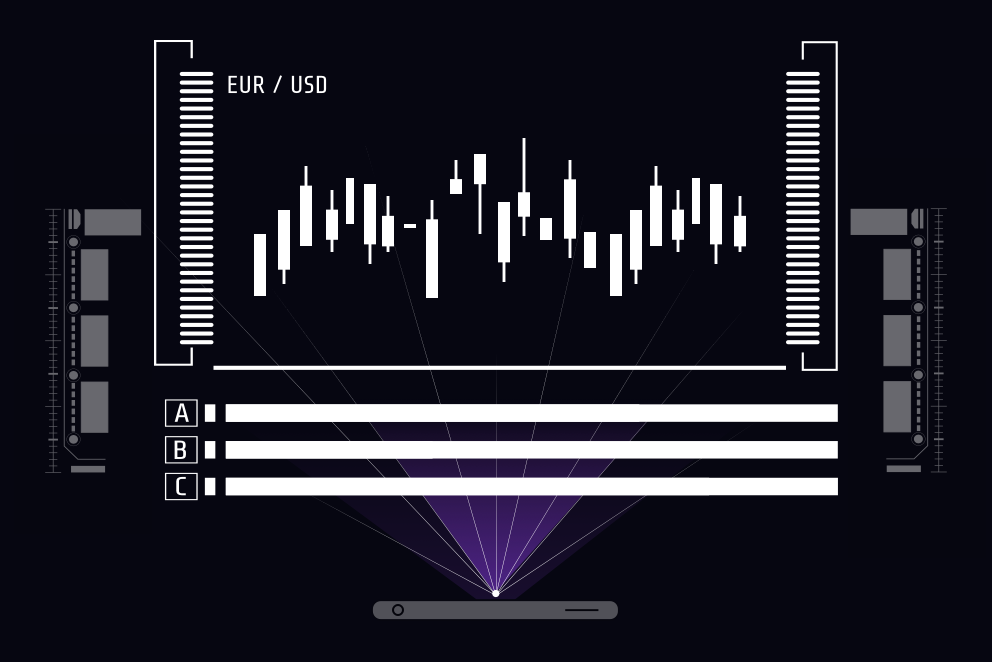Mobile phones generate 3D trading rooms
Carrying a professional trading setup via a mobile device would be a dream for any trader. During my trip to the future, I learned that it’s only a matter of time before we have this ability. In 2069, three-dimensional (3D) volumetric interfaces make it possible for a trader to launch their own, personalised trading floor – wherever they are.
Traders use augmented reality to build workspaces
Traders have always been chasing faster, more efficient trading methods and, by the year 2069, this involves using high-tech volumetric interfaces. Volumetric images are far more advanced than holographic images, because they give traders a 360-degree view, from any angle or depth.
A workspace – in the form of a cubicle – can be launched in an empty space from a mobile quantum computer and customised according to a trader’s exact specifications. The booth effectively combines augmented reality (AR) with volumetric technology to give users the comprehensive trading experience they desire.

Trading is not a one-size-fits-all experience
Apart from launching a trading workstation wherever they are, traders can also customise their trading experience to a greater degree than they can today, with control over every last detail. They can monitor more markets, view hundreds of trades at the same time without having to close any windows, and customise their audio and trading alerts.
However, this system is far from complex from a user-experience point of view. A single, multifunctional console is used to control the system via thought or speech. The system translates thoughts or voice commands, so traders can choose the markets they wish to monitor or trade, select their position sizes, and decide where to place stops and limits with ease.
Traders can pull charts and trade in thin air
Significant upward trends in data dissemination and computing allow for seamless, haptic feedback. This means traders can ‘feel’ the platform, enabling them to pull and move charts with their fingers, in thin air.
The volumetric trading booth’s haptic system requires no additional hardware, however, traders who opt to use thought-powered trading (TPT) technology can experience added benefits such as faster reaction times and controlled emotional responses.
Could this really happen?
With time travel known to disrupt the space-time continuum, our experts take a look at how likely it is that these events will come to pass…
The view from 2019
Though volumetric technology is still in the very early stages of development, the interest in holography and 3D viewing is not new. Researchers the world over are constantly working on new developments, which have generally been received positively by the public. Improvements in this field are helping to turn the potential of holography and augmented reality (AR) into marketable products.
Researchers in Japan have already started to develop holographic images that can be touched and felt. These holograms, which are created by high-frequency laser pulses, respond to human touch in real time – the figures generated can be manipulated in mid-air. It is said that further development could allow researchers to create virtual keyboards that will give haptic feedback. Additionally, holographic and volumetric technology is already being researched by companies such as Coca-Cola and BMW, as well as Microsoft Chairman Bill Gates.
Global research has demonstrated the feasibility of AR and 3D tech, which can be seen in the development of holographic conferences and field trips, as well as holographic projections in the medical field, which assist with surgery. Of course, there are certainly many significant challenges that remain with this type of technology, but commercialisation and mass adoption seem likely to become a reality within a few decades.


